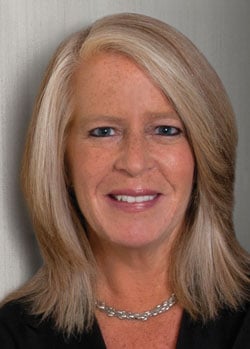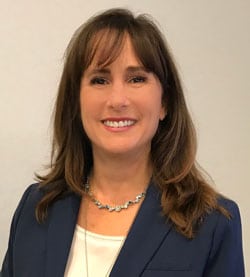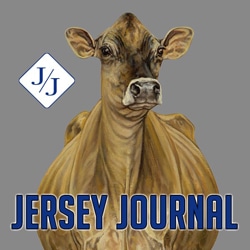A Sustainability Perspective Starts with “Why”
Nary a day passes that the words “sustainable,” “carbon neutral,” “net-zero,” and “climate smart” spring up in emails, news pieces, and conversation. These seemingly interchangeable terms touch the lives of everyone. They impact the way every organization conducts business, including the nation’s 31,000 dairy producers.
So, what is driving the sustainability movement? And how is the dairy industry responding?
At its heart, the sustainability movement is driven by consumers, people who want to reduce their use of natural resources to positively impact the environment. Their core values impact purchase decisions, including those for food. They want to know where their food comes from and how it is produced, from farm to table. They want to be assured it is healthy and produced in a way that treats animals and workers well. They make decisions based on what they believe about the organization and have expectations of the brands they support.

When it comes to foods and other products, research authorities like The Hartman Group of Bellevue, Wash., reveal the following insights about consumers:
• 70% would like to see companies’ sustainable practices become more visible and publicized.
• 81% say it is “very” or “extremely important” that companies implement programs to help the environment.
• 88% would like brands to help them be more environmentally friendly and ethical in their daily lives.
• 85% expect companies to invest in sustainability in the next year.
A Changing World
We live in a changing world and the sooner we accept and address change, the better our chances for adapting, and even thriving.
Sustainability expectations are of more concern to Gen Z (ages 10-24) and Millennials (ages 25-40) than they are for Gen X (ages 41-56), Baby Boomers (ages 56-75) and older Americans. Young consumers are more aligned with the digital world than the farming world. They are generations removed from how the food they enjoy arrived at their local grocery store. Yet, they expect it to come to them in a manner they can feel good about and aligns with their values.
They are a collective force to understand and engage. Consider that there are 76 million Millennials, and they are now a larger segment than Baby Boomers. Gen Z is even larger and comprises 20% of the U.S. population. They have a spending power of approximately $100 billion, which does not factor the purchasing influence they have on their parents.
No one is exempt from these changing consumer expectations, including agriculture and the dairy industry. The motivation for sustainability moves through every part of the supply chain and reaches into aspects that may not seem so obvious.
For example, companies and industries across the world have redesigned their goals and purpose in the name of environmental, social, and governance (ESG) criteria. This is partially due to consumer influence, but also because investor groups such as BlackRock, Vanguard, and State Street have specific requirements for their investment decisions. This has spurred companies to assess sustainability in areas such as the environment and worker welfare and be transparent about the risks and opportunities they face.

Global dairy customers, including Starbucks and Coca-Cola, are prioritizing sustainability in their supply chains. So are notable dairy companies such as Nestlé, Danone, and Fonterra. Their expectations trickle through the chain to the farm so they can show consumers their products begin in a good place.
Keep Moving Forward
So, what is a company or an industry such as U.S dairy to do?
It starts with acknowledging sustainability is good for business and that the U.S. dairy industry is leading the effort, not playing catch up.
“We see the growing expectations of the world around us from customers, consumers, governments, and others,” said Barbara O’Brien, CEO of Dairy Management Inc. (DMI) and the Innovation Center for U.S. Dairy.

“U.S. dairy is leading in this global discussion around climate impact and building on the strength of our diverse industry to demonstrate dairy as an essential and sustainable food source.”
Indeed, dairy farmers and the dairy community have a long-standing history and commitment to taking care of their animals, air, land, and water. It is a stewardship legacy for dairy producers to provide sustainably produced, nutritious foods that nourish people, communities, and the planet.
Dairy farmers have continually innovated to improve their carbon footprint. The eco-forward practices they have adopted between 1944 and 2007 have enabled them to produce 60% more milk with 15.7 million fewer cows, using 65% less water and 90% less land. That yields 76% less manure and a 63% smaller carbon footprint.
Fast forward to today and the news is even better. Documented progress shows the environmental impact of producing a gallon of milk has shrunk significantly from 2007, requiring 30% less water, 21% less land and a 19% smaller carbon footprint.
“Dairy farmers are some of the most visionary and imaginative-thinking innovators and they have been doing it for generations,” said Karen Scanlon, who serves as executive vice president of environmental stewardship for DMI, which manages the national dairy checkoff.

“Given the challenges the world faces and growing global competition, our opportunity has never been stronger. There’s a narrative that hasn’t yet been told about the idea of dairy as, not only a nutritional solution, but an environmental solution positively impacting communities and businesses around the globe.”
Working Together on a Long-Term Solution
Developing this narrative will take a community effort that has already begun.
Through the check-off funded Innovation Center for U.S. Dairy, a bold statement was made last year regarding the industry’s environmental stewardship goals for 2050. Among the goals were to achieve greenhouse gas neutrality, optimize water usage, and improve water quality over the next three decades.
Keeping consumer expectations in mind, the Innovation Center went through a year-long process that included input from more than 100 stakeholders, including farmers and processors and retailers, to set the vision and goals. Remember, these goals are voluntary and collective and designed to show dairy is a fundamental part of global sustainable food systems.
“In addition to being motivated by consumer trends, dairy sustainability is a proactive path to preserving farmers’ right to farm,” Scanlon noted. “This is about claiming our heritage and history and demonstrating through voluntary commitments and actions that we will continue to have a positive impact on the environment.
“We’ve heard some skepticism and farmers asking many of the same questions we had ourselves. But through our work and researching the possibilities and engaging with other experts, we believe dairy’s vision of being an environmental solution is possible. We also understand and appreciate that there must be a financial return to the farmer, and we feel this strategy can deliver that.”
As well, for several years, a processor working group has been working on in-plant sustainability metrics and reporting through the Dairy Sustainability Alliance® of the Innovation Center. The group includes around 50 representatives from more than 20 companies who meet regularly and engage in processing facility-focused workstreams for waste, water, packaging, and greenhouse gas emissions to drive action and demonstrate progress toward the goals.
Developing Tools for Farmers
Not long after the goals were set, the U.S. Dairy Net Zero Initiative (NZI) was launched to close research gaps and provide science-based documentation and proof to tell the on-farm part of dairy’s sustainability story more credibly, accurately, and comprehensively.
NZI’s aim is to build the case, knock down barriers and create incentives for farmers that will lead to economic viability and positive environmental impact on farm with progress toward the goals.
NZI has four areas of focus designed to help farmers understand their farm’s footprint and consider practices and technology that can help reduce greenhouse gas emissions and improve water efficiency and quality, including:
• On-farm energy use and renewable energy generation (reducing energy use and, where practical, generating renewable energy that can tip the scale).
• Feed production (methods to reduce emissions, sequester carbon).
• Enteric emissions reduction (building a playbook for feed efficiency through balanced diets for animals, genetics and more).
• Manure and nutrient management (better handling and storage while developing more revenue streams needed to advance manure management).
NZI is supported by leading national dairy organizations including the Innovation Center, National Milk Producers Federation, Newtrient, U.S. Dairy Export Council and the International Dairy Foods Association. Also at the table with the dairy industry are partners that bring technology and resources, including Nestlé, Starbucks, Syngenta, Soil Health Institute, and The Nature Conservancy.
Additionally, the Foundation for Food & Agriculture Research provided a $10 million grant for a six-year nationwide Dairy Soil & Water Regeneration project to answer specific questions about dairy crops.
“One of NZI’s greatest assets is the depth and breadth of the U.S. dairy industry and our partners,” O’Brien said.
“The entire dairy community is at the table—from farmers and cooperatives to processors, household brands and retailers. Leveraging this talent, innovation, diversity, and scale sets the stage for continued environmental progress and a more sustainable planet for future generations.”
Scanlon offers ways NZI will lead to achieving the goals while offering revenue-generating possibilities. While every farm is not expected to do everything, she emphasized that many farms can, and are already doing, employing practices of impact, such as:
• Leveraging acres for carbon sequestration and regenerating soil.
• Reducing enteric methane emissions through optimized feed rations.
• Diverting waste from other industries, such as almond hulls or citrus pulp into cow feed, keeping it out of landfills.
• Upcycling manure—a big contributor to a farm’s footprint—into valuable and renewable products, such as fuel and fertilizer.
• Expanding markets for ecosystem services, so farmers can further diversify their revenue, creating incentives for further action and leadership.
Providing Solutions
NZI, Scanlon says, is very much about sharing peer-to-peer learnings inside and outside the industry and supporting wider adoption, improvement, and recognition. With dairy supply chain partners and the broader community supporting the 2050 goals, Scanlon sees dairy continuing its role as an environmental leader and paving the way for a bright future for farmers.
“Our vision is aspirational, but not unrealistic,” she said. “And it’s constructive, disruptive and counter to the current conversation happening now in media and social media that would lead people to believe that dairy is the problem and has no role in the future of sustainable food and farming.”
“U.S. dairy not only has a role, but it can be a solution to society’s most pressing environmental problems. Dairy farmers are not only committed to reducing their impacts but to improving the world around them.”




